
Heinrich Jakob Fried (11 March 1802, Queichheim - 2 November 1870, Munich) was a German painter.

Heinrich Jakob Fried (11 March 1802, Queichheim - 2 November 1870, Munich) was a German painter.
He studied at Stuttgart and Augsburg, and from 1822 under Johann Peter von Langer and Peter von Cornelius at the Academy of Fine Arts, Munich. In 1834 he went to Rome, and afterwards to Naples, and from thence returned to his native country in 1837. Being patronized by Prince Karl Philipp von Wrede, he settled at Munich in 1842, and became conservator of the Artistic Society in 1845.
Fried was a great lover of legends, often taking these and similar sources for the subjects of his best pictures. He also executed a great number of landscapes, as well as genre and historical pieces and portraits, the best of which are:

Julius Schnorr von Carolsfeld was a German painter, chiefly of Biblical subjects. As a young man he associated with the painters of the Nazarene movement who revived the florid Renaissance style in religious art. He is remembered for his extensive Picture Bible, and his designs for stained glass windows in cathedrals.

Peter von Cornelius was a German painter; one of the main representatives of the Nazarene movement. He was the uncle of the composer Peter Cornelius (1824–1874).

Johann Friedrich Overbeck was a German painter and a founder of the Nazarene art movement.
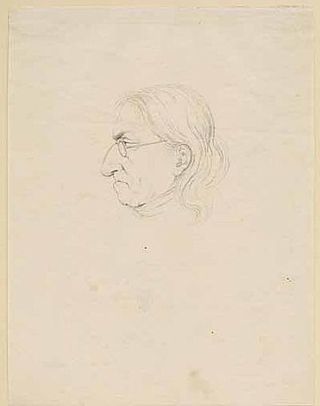
Heinrich Adam was a German painter.

Otto Magnus Freiherr von Stackelberg was a Baltic German, Imperial Russian archaeologist, as well as a writer, painter and art historian.

Eduard Magnus was a German painter, primarily known for portraits.
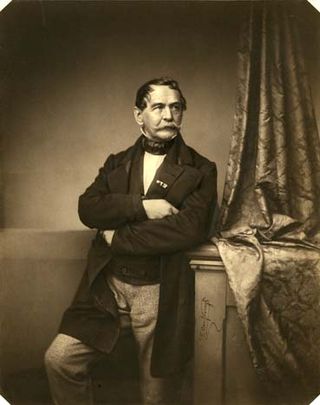
Peter Heinrich Lambert von Hess was a German painter, known for historic paintings, especially of the Napoleonic Wars and the Greek War of Independence.
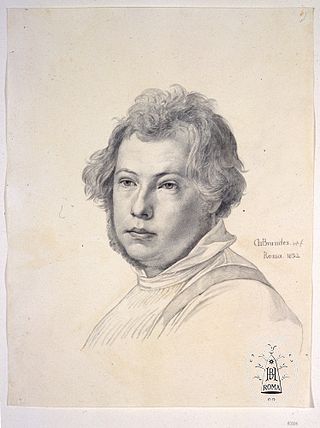
Georg Heinrich Brandes was a German painter.
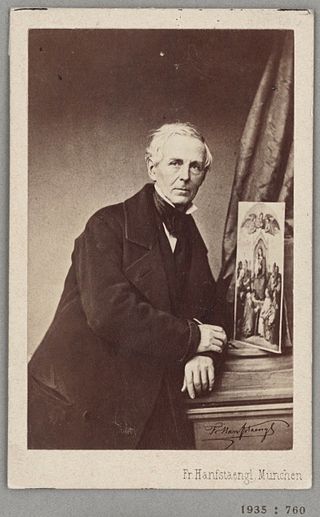
Heinrich Maria von Hess was a German painter, a member of the Nazarene movement.

Clemens von Zimmermann was a German historical painter. He is associated with the Düsseldorf school of painting.

Heinrich Jakob Aldenrath was a portrait painter, miniaturist, and lithographer.
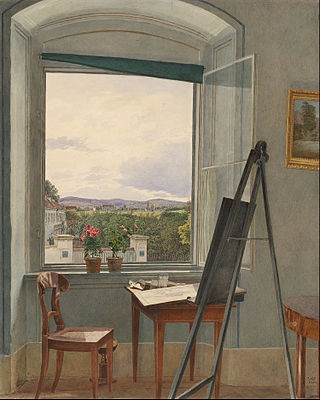
Jakob Alt was a German painter and lithographer.
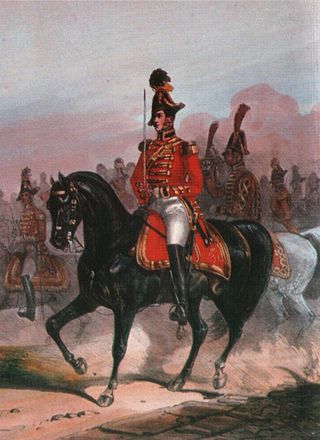
Heinrich Ambros Eckert was a German painter of battle-pieces. He was born at Würzburg in the Grand Duchy of Würzburg, and was at first instructed by Carl Caspar Fesel (1775-1846). In 1825 he attended the academy at Munich, and afterwards visited the Tyrol and France. Between 1835 and 1840, in conjunction with Monten and Schelver, he published a work upon the German federal army, with two hundred coloured lithographic plates; and another illustrating the return of the Russian troops to their homes. He died at Munich in 1840, while engaged upon a picture of the great review near that city before the Emperor of Russia. Besides genre subjects and battle-pieces he painted marine views.
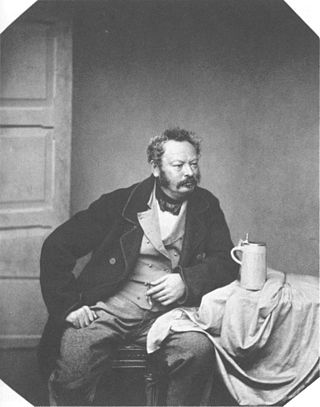
Heinrich Bürkel (1802–1869) was a German genre and landscape painter
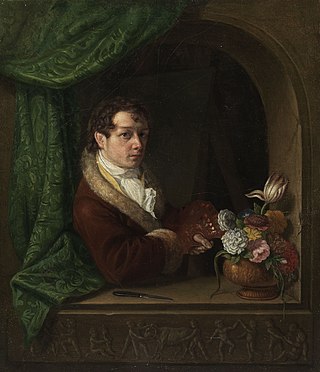
Franz Ludwig Catel was a German painter. He spent most of his career in Rome.

Bernhard Fries was a German landscape painter. He is associated with the Düsseldorf school of painting.
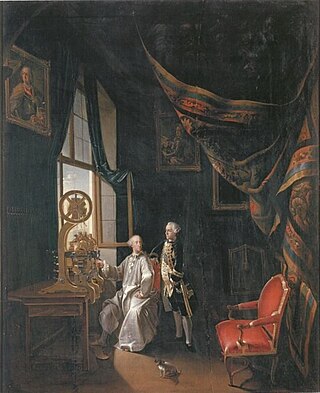
Johann Jakob Dorner the Elder (1741–1813), who was born at Ehrenstetten, near Freiburg in Breisgau, was a painter of historical and genre subjects. He was at first a pupil of Rösch at Freiburg and of Ignaz Bauer at Augsburg. He afterwards visited Italy, the Netherlands, and Paris. He was a professor and director of the Gallery at Munich in 1770, and died in that city in 1813. In the Darmstadt Gallery is a picture of Two Soldiers and a Maiden by him; and in the Pinakothek at Munich, a Linen Draper, which is a portrait of his wife, dated 1775.

Friedrich Eibner (1826–1877), a German painter of architectural subjects, was born at Hilpoltstein. He studied after the works of Heinrich Schönfeld, and travelled in Bavaria, and afterwards in Germany, France, Upper Italy, and Spain, making a large number of water-colour drawings of the places he visited. The Album for the Prince Metschersky, with whom he travelled in Spain in 1860–61, may be considered his best work. He died at Munich in 1877.

Friedrich August Elsasser (1810-1845), a painter of landscapes and architectural views, was born at Berlin and studied at the Academy of that city under Blechen, whose influence on art was at that time very great. In 1831 he went to Italy, and in 1834 and 1835 he visited Sicily.

Johann Jakob Frey, a Swiss landscape painter, a native of Basle, studied principally in Italy, and his views of that country are much valued. From Egypt, whither he accompanied Professor Lepsius, he brought many excellent sketches of the pyramids, labyrinths etc. It is to be regretted that he was obliged to make but a short stay on account of his health. His painting of 'Chamsyn in the Desert,' in the possession of the Emperor of Germany, was produced in 1845, and is greatly admired. He died at Frascati, near Rome, in 1865. The Modern Gallery at Munich has his Two Memnons near Thebes.